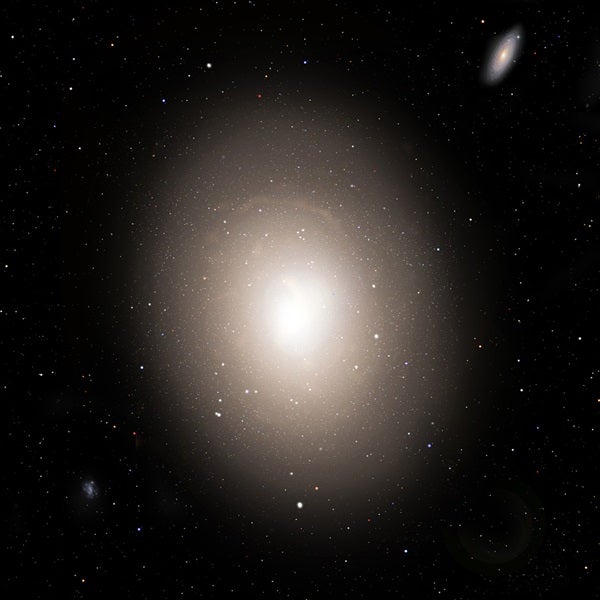The hidden stars are known as red dwarfs for their color and small size. Because red dwarfs are small and dim compared to stars like the Sun, astronomers hadn’t been able to detect them in galaxies beyond the Milky Way before now. As such, they didn’t know how many stars in the universe were red dwarfs.
Scientists used powerful instruments at the Keck Observatory in Hawaii to detect the faint signature of red dwarfs in the cores of eight elliptical galaxies, which are located between about 50 million and 300 million light-years away. They discovered that the red dwarfs that are only between 10 and 30 percent as massive as the Sun were more bountiful than expected.
“As it turns out, the universe thinks small, at least when it comes to star size,” said Charlie Conroy from Harvard University, Cambridge, Massachusetts. “Our stellar inventory has changed dramatically.”
“No one knew how many of these stars there were,” said Pieter van Dokkum from Yale University, New Haven, Connecticut. “Different theoretical models predicted a wide range of possibilities, so this answers a long-standing question about just how abundant these stars are.”
Their results imply that stellar population counts depend on what type of galaxy astronomers examine, just as a census of the city of New York and the town of Derby, Kansas, will find different population numbers.
“We usually assume other galaxies look like our own. But this suggests other conditions are possible in other galaxies,” Conroy stated. “This discovery could have a major impact on our understanding of galaxy formation and evolution.”
In particular, galaxies might contain less dark matter — a mysterious substance only detectable due to its gravitational effects — than previous measurements of their masses indicated. Instead, the abundant red dwarfs might contribute more mass than previously calculated.
The hidden stars are known as red dwarfs for their color and small size. Because red dwarfs are small and dim compared to stars like the Sun, astronomers hadn’t been able to detect them in galaxies beyond the Milky Way before now. As such, they didn’t know how many stars in the universe were red dwarfs.
Scientists used powerful instruments at the Keck Observatory in Hawaii to detect the faint signature of red dwarfs in the cores of eight elliptical galaxies, which are located between about 50 million and 300 million light-years away. They discovered that the red dwarfs that are only between 10 and 30 percent as massive as the Sun were more bountiful than expected.
“As it turns out, the universe thinks small, at least when it comes to star size,” said Charlie Conroy from Harvard University, Cambridge, Massachusetts. “Our stellar inventory has changed dramatically.”
“No one knew how many of these stars there were,” said Pieter van Dokkum from Yale University, New Haven, Connecticut. “Different theoretical models predicted a wide range of possibilities, so this answers a long-standing question about just how abundant these stars are.”
Their results imply that stellar population counts depend on what type of galaxy astronomers examine, just as a census of the city of New York and the town of Derby, Kansas, will find different population numbers.
“We usually assume other galaxies look like our own. But this suggests other conditions are possible in other galaxies,” Conroy stated. “This discovery could have a major impact on our understanding of galaxy formation and evolution.”
In particular, galaxies might contain less dark matter — a mysterious substance only detectable due to its gravitational effects — than previous measurements of their masses indicated. Instead, the abundant red dwarfs might contribute more mass than previously calculated.










